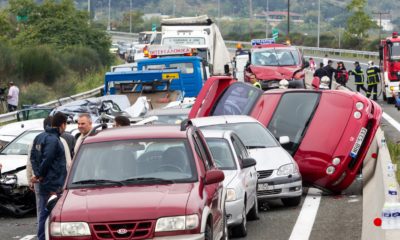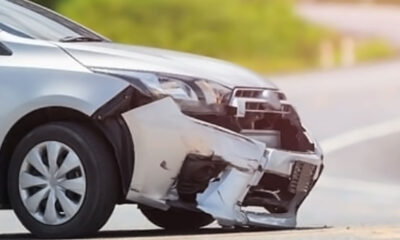Article Snapshot: Delving into 2024's latest baby formula lawsuit update: a $60 million verdict and…
Texas is one of a handful of U.S. states that remain open range. An open-range state means that cattle are typically free to roam at large. However, property owners in the state do have a responsibility to keep cattle away from state and federal highways. Roaming livestock crashes are far more common than you may believe.
Additionally, Texas is a patchwork of counties and cities of both open and closed range laws stemming from special local elections about the types of livestock that are free to roam—if at all. Livestock running-at-large may sound like the plot of a sitcom, however, for the hundreds of people injured each year, cattle on the loose is no laughing matter.
What is an open-range state?
An open-range state means that by default livestock owners are generally not liable if their loose cattle lead to injuries or other damages. These laws allow animals to roam freely regardless of land ownership.
It may be hard to imagine, but just 150 years ago, Texas was a massive land without fences. Both animals and people could roam from the Gulf Coast through the Great Plains to the Basin with very little standing in their way. Driving down any roadway today, however, passengers will see that the Lone Star State boasts thousands of miles of barbed wire fences. Despite cattle being behind these fences, it is important to note that Texas has largely stayed true to its former self and has evolved to what is considered an open-range state.
Where open-range laws exist, the burden to put up a fence usually falls on the person or property owner who wants to keep animals off of their property. For example, farmers growing strawberries on their property would need to put up a fence to keep their neighbor’s cows from grazing or trampling their produce.
The Texas Supreme Court kept the state’s fence-free legacy intact for the first time more than a century ago. Despite the evolution of society and our growing dependence on cars, buses and other vehicles that travel at high speeds, the state remains true to its open-range doctrine. In fact, just 20 years ago, in 1999, the state supreme court refused to adopt a common law requiring livestock owners to keep livestock off of all roadways.
Are there any exceptions to the Open-Range Doctrine?
While the open-range doctrine was reaffirmed by the Texas Supreme Court just 20 years ago, there are exceptions to this rule. Notably, the two major exceptions in Texas are local stock laws and highways with state or federal designations.
What is the “Stock Law” exception?
In 1876, the Texas Legislature realized that it was impractical to have open range everywhere. As a result, they passed a law that granted counties to hold local stock law elections. A stock law is a specific law that forbids certain kind of livestock from running through a county or designated area of a county. Stock laws typically serve the purpose of changing an area from open range to closed range.
The Texas Agriculture Code permits local governments to hold elections aimed at preventing animals from running at large. Typically, local stock laws will prohibit the following animals from running at large:
- Horses
- Mules
- Donkeys
- Sheep
- Goats
- Jennets
- Cows/Cattle
What problems can arise from local stock law options?
Because stock laws can be enacted countywide or in certain precincts or towns Texas is a patchwork of open-range and closed range laws. In addition, there is no central database of where stock laws have been enacted. Considering that many of the state’s stock laws were enacted during or by the 1930s, finding out a county’s local laws will require some serious research.
If you are driving in unfamiliar territory, you may be unsure of your rights in the event of a livestock crash. One way to find out is to contact a county clerk. Additionally, speaking to a qualified roaming livestock crash attorney about your situation can help you determine your options.
Additionally, in some cases stock laws are unenforceable. The Texas Agriculture Code provides very specific rules on how stock laws can appear on a ballot. The code separates livestock animals into different subsections. When a local government enacts stock laws, it must ensure that the animals in different subsection are not combined on the ballot. In order for a stock law to be valid, the livestock on a ballot should come from the same subchapter in the Texas Agriculture code.
State and Federal Highway Open-Range Exemption
As automobiles became our primary mode of transportation, the U.S. has grappled with speed limits. For example, between 1974-1995 the U.S. had a national maximum speed law (NMSL). But since the NMSL repeal, our nation’s highways have increased in speed—this is particularly true for Texas. Historically, highways are more traveled and carry a much higher speed than farm-to-market roads. As such, requiring a person to control their livestock if their property is adjacent to a highway is in the interest of public safety.
People who live in urban areas may not have a clue that Texas is an open-range state. In fact, many people don’t think to watch out for livestock while driving on high-speed Texas highways. It is worth noting that in addition to the state’s open-range status, Texas boasts the highest posted speed limit in the country at 85 mph and the highest average top speed in the nation.
By law, owners have a responsibility to keep livestock from roaming on state and federal highways. Otherwise, owners may face a small fine. Further, when livestock owners fail to meet this duty, they open themselves up to liability claims when a person suffers an injury. The law prohibits the following animals from roaming freely along highways:
- Horses
- Mules
- Donkeys
- Cows
- Bulls
- Steer
- Hogs
- Sheep
- Goats
“If you’re driving on a state or federal highway and see one of these animals walking on or near the roadway, call the local police or sheriff’s department,” Attorney Russell Shrauner said. “They can get these animals off the road and prevent a crash. In addition, they may cite the property owner which is a record that can be helpful in a personal injury claim.”
How can a landowner knowingly permit animals to roam at-large?
Because of the state and federal highway and local stock law exemptions, landowners have a responsibility to keep cattle confined when the circumstances require it. The Texas Agriculture code states that a “person who owns or has responsibility for the control” of livestock “may not knowingly permit the animal to traverse or roam at large, unattended on the right-of-way of a highway.” Texas courts define that a landowner may act knowingly when:
- The landowner was aware that the fences were unable to withstand inclement weather.
- The landowner knew that cattle escaped through weak fences many times before.
- Police previously informed the property owner of their loose cattle on the roadway.
- The landowner failed to inspect fences.
Determining liability in a roaming livestock crash
As we have established, liability in a livestock car crash largely depends on whether or not the area of the crash occurred was an open or closed range. Examples when a property owner faces potential liability include the following:
- Livestock escaped a weakened fence leading to a vehicle crashing into the cow on a state or federal highway. The party responsible for controlling the livestock or real estate may be held liable if the party had previous knowledge of a weak or broken fence.
- An animal escaped an unsecured fence and was hit on a farm-to-market road in a county that adopted closed-range stock laws. The party responsible for controlling the livestock may be liable if the party negligently permitted the cattle to get on the highway.
- A crash occurs in a county that has adopted local stock laws on a state or federal highway. The party responsible for controlling the livestock may be held liable if they knowingly permitted the animal on to the roadway.
Proving liability in these situations may prove difficult. In many cases, to prove liability you will need to ask the right questions in an investigation. A skilled roaming livestock crash attorney can begin looking into the potential liability in your case.
How to identify the owner of a roaming cattle
Identifying the owner of a roaming cattle can happen in several ways. Animal identification practices are largely unchanged. For many herd owners, branding cattle protects investments and income. Cattle will have:
- Tattoos on the inside of ears
- Branding with a hot iron
- Ear tag
- Ear notch
- Electronic devices (such as a chip)
“If none of these identifying marks are present, then we can consult public records and deduce from who is in the area to see who that property belonged to,” Shrauner said.
Free-Roaming Cattle: Deadly Car Crashes
January 2019
Unsecured cattle roaming on U.S. 84 just northwest of Lubbock led to a fatal crash that killed a 21-year-old and injured two others. The Jan. 11 crash is one instance of what seems to be an ongoing problem in the Lubbock area.
Investigators say that a black cow was struck by a 2008 Chevrolet Cobalt traveling south on the highway. Minutes later, the car carrying 21-year-old Alizah Reyes struck the cow carcass and rolled into a ditch.
Earlier that day a New Mexico woman a Lubbock newspaper that evening before the crashes, she also crashed into cattle in the same area. The woman said she and her mother were headed westbound on U.S. 84 at 5 a.m. when they struck two of four black cows. She and her mother were able to escape with minor injuries. They say that they warned authorities that there were other cows on the loose.
August 2018
Heavy rain and loose cattle on a highway contributed to a deadly crash in Lynn County on U.S. 87 north of Tahoka. A tractor-trailer struck several cattle, leaving several carcasses on the highway. A pickup truck traveling on the same road approached the dead cattle and attempted evasive action, but still struck the animals. As a result, the driver lost control of the vehicle causing a rollover and vehicle roof crush.
March 2018
In March 2018, two separate accidents on I-27 in Plainview involved a herd of cows on a freeway. Three of those cows were hit and killed by oncoming drivers.
How can an attorney help me after a roaming livestock crash?
Texas has more than 80,000 miles of highway, and nearly 30,000 of that is U.S. and state highways. It is important to understand that you have rights after any kind of crash—including those involving livestock. A qualified roaming livestock crash attorney can help you determine the following questions:
- Does a stock law exist in the area of my crash?
- What animals are covered by the local stock law?
- Is the property permit the animals to run at large?
If you suffered injuries or a loved one was killed after a livestock crash, contact a qualified roaming livestock crash attorney to help you determine your rights. The Carlson Law Firm has more than 40 years of experience fighting for justice and protecting your rights. We can help you determine the next step in your recovery and get you the compensation you deserve.



